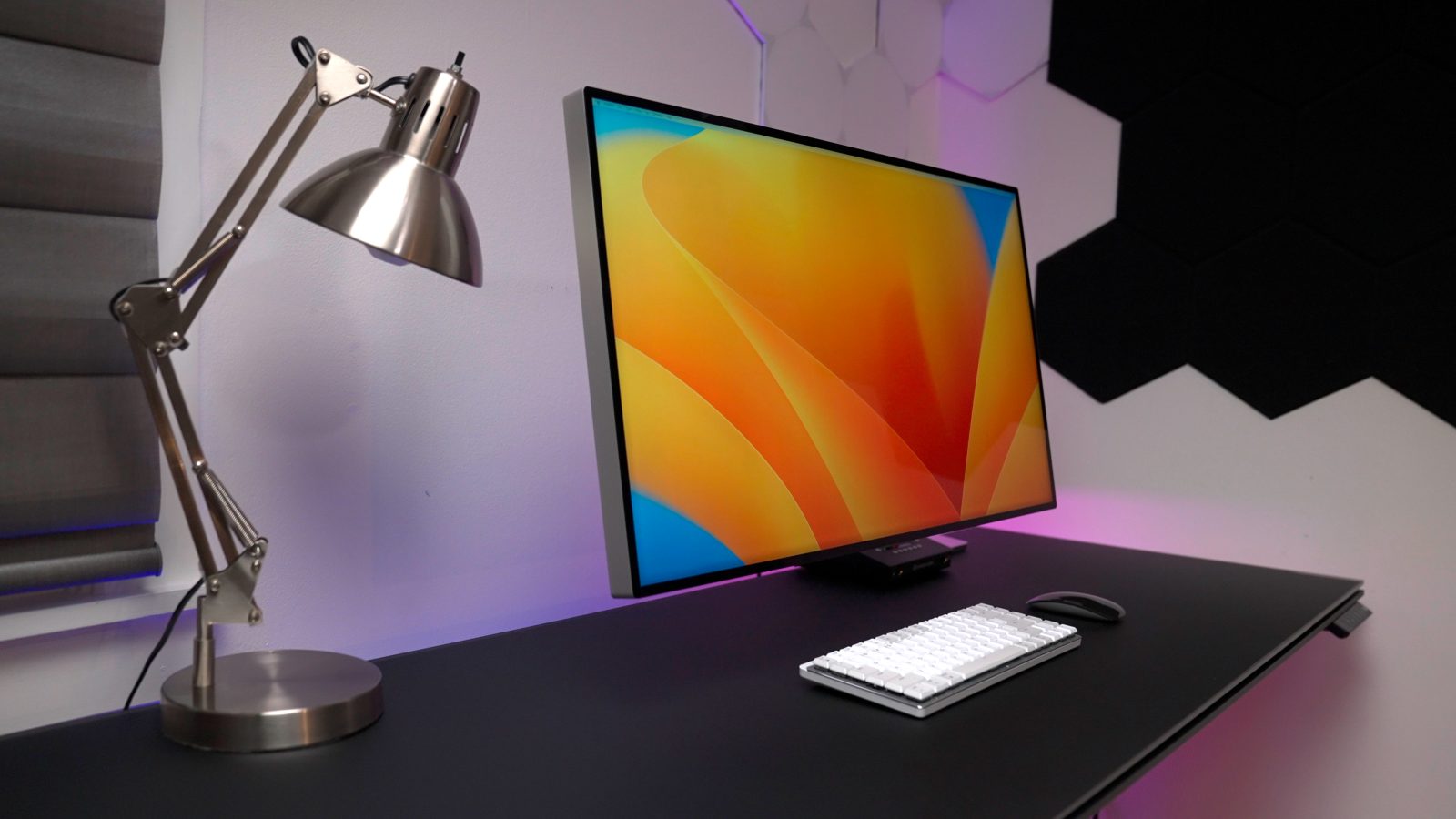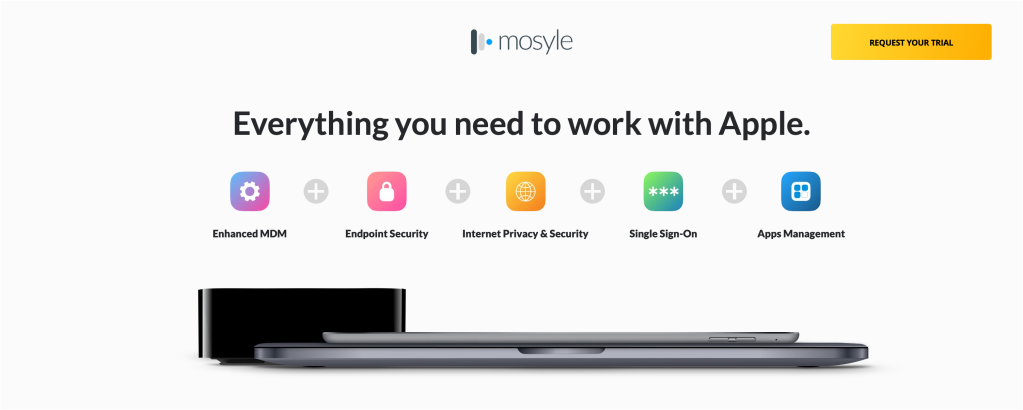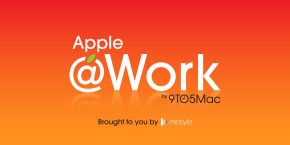
Apple @ Work is exclusively brought to you by Mosyle, the only Apple Unified Platform. Mosyle is the only solution that integrates in a single professional-grade platform all the solutions necessary to seamlessly and automatically deploy, manage & protect Apple devices at work. Over 45,000 organizations trust Mosyle to make millions of Apple devices work-ready with no effort and at an affordable cost. Request your EXTENDED TRIAL today and understand why Mosyle is everything you need to work with Apple.
In November, during AWS re: Invent, Amazon announced that Amazon WorkSpaces Thin Client is now available for enterprise production and use. Thin Client is not new as a concept, but it may be the next wave of enterprise computing. With Apple seeing rapid growth in the enterprise, is this something they should consider?
About Apple @ Work: Bradley Chambers managed an enterprise IT network from 2009 to 2021. Through his experience deploying and managing firewalls, switches, a mobile device management system, enterprise-grade Wi-Fi, 1000s of Macs, and 1000s of iPads, Bradley will highlight ways in which Apple IT managers deploy Apple devices, build networks to support them, train users, stories from the trenches of IT management, and ways Apple could improve its products for IT departments.

What is Amazon WorkSpace Thin Client?
Amazon WorkSpaces Thin Client aims to lower end-user device costs and simplifies device management by shipping directly from Amazon to end users or company headquarters. Once the device is received, end users can set it up in minutes without needing anyone from IT. The machines are automatically configured once they connect to the internet.
WorkSpaces Thin Client aims to help improve security by preventing users from storing data or loading applications on the local device, and it includes a simple device management service for IT teams to use. This concept isn’t new, and it’s something that I’ve been talking about with colleagues for nearly 20 years. Google pioneered this concept with the Chromebook, and while it had much success in K-12, it hasn’t seen as much adoption in the enterprise. On the other hand, Amazon is VERY popular with enterprise IT managers, with Amazon Web Services powering much of the global internet. I was at re: Invent this year, and it’s hard to understate Amazon’s overall reach here. The business world essentially runs on top of Amazon Web Services. Google and Microsoft play a significant role here, but AWS is just something else.
What should Apple’s response be?

Top comment by Fractal
The author should have taken some time to understand the history of thin clients as I got the sense they know very little about them and their history.
Google didn’t pioneer thin clients or stripped down, centralized management with the introduction of Chromebooks. The concept has been around since the dawn of computing. The difference with Chromebooks is that their introduction aligned with web technologies facilitating more feature-full apps to be created through a browser with user storage among other things.
The real reason Amazon introduced thin client devices is because the hardware already exists and it’s an easy way to sell existing Workspaces and adjacent AWS services to more customers. All they’re doing is repurposing Fire Cubes with a slightly different OS.
The infrastructure for Apple to do this is already there and a high-performing intern could probably mock this up in a summer.
Apple had NetBoot for decades. You can boot a Mac off the Internet and get to a browser. iCloud already provides web apps. It wouldn’t take much to expand that. Existing Apple TV hardware would be more than sufficient, though lack of ports may require some revisions or the use of a hub. Even a Studio Display could potentially be used.
The reason you won’t see it is because there isn’t a huge benefit for Apple. It’s an area that doesn’t make a lot of sense for Apple to enter, much like OS X server. Just because you can doesn’t mean you should.
I don’t think Apple should respond to Amazon WorkSpaces Thin Clients and let the market dictate. I do believe the company should be very aware of it, though. They should be building out macOS in the Cloud and ready to offer a similar solution. It could be a small, thin client tied heavily into Apple Business Manager and Apple Business Essentials, prepared for an IT team to deploy. Apple Business Essentials will need to be expanded to work with larger organizations, as I expect if Thin Clients becomes widespread, it will start at the large enterprise levels. Apple could use its M1 chip, build in ethernet, Wi-Fi, and display output, and let most of the processing power come from the cloud. Amazon charges $279.99 for its Thin Client with a monitor or $195 for a stand-alone Thin Client. There is an additional monthly fee here, which is why I think Apple could be interested in it. Amazon charges $6 per month. Apple could sell its Thin Client for $299 (premium experience) and bundle it on top of Apple Business Essentials.
I could see Apple charging $29.99/month per device, including Apple Business Essentials, AppleCare for the device (drop ship replacement), plenty of storage, and access to macOS in the cloud through a thin client. I could also see Apple offering plenty of upgrade options as well. Imagine that your $29.99 access includes an M3, but for an additional $10/month, you can upgrade to an M3 Ultra with extra RAM. As Apple releases new hardware, the thin client experience could automatically gain access to it.
Will Apple release a Thin Client?
I don’t think Apple wants to move into the Thin Client market. but I could see them being forced into it depending on whether Amazon can make any headway into its enterprise market share. If there is anyone who could challenge Apple’s rapid growth in the enterprise, I think it could be Amazon because of how entrenched it is with IT teams. One thing that I know Apple would love to do in the enterprise is increase its services revenue, and Thin Clients is the way to do that. Sell a low-cost and lower-power device up front and charge a premium monthly fee for an ‘all in’ approach for everything a business needs. It would lose some short-term Mac hardware revenue but could dramatically increase its ongoing enterprise services revenue.
Apple @ Work is exclusively brought to you by Mosyle, the only Apple Unified Platform. Mosyle is the only solution that integrates in a single professional-grade platform all the solutions necessary to seamlessly and automatically deploy, manage & protect Apple devices at work. Over 45,000 organizations trust Mosyle to make millions of Apple devices work-ready with no effort and at an affordable cost. Request your EXTENDED TRIAL today and understand why Mosyle is everything you need to work with Apple.
FTC: We use income earning auto affiliate links. More.




Comments